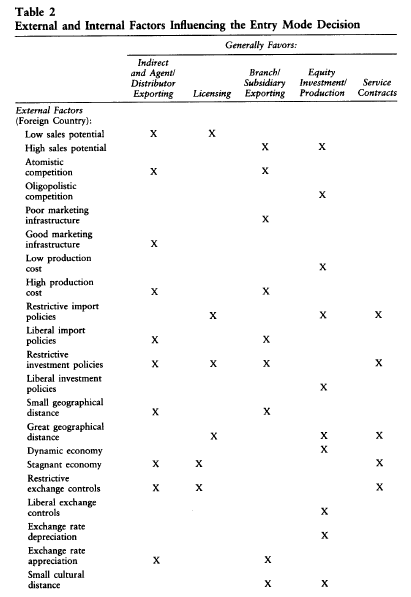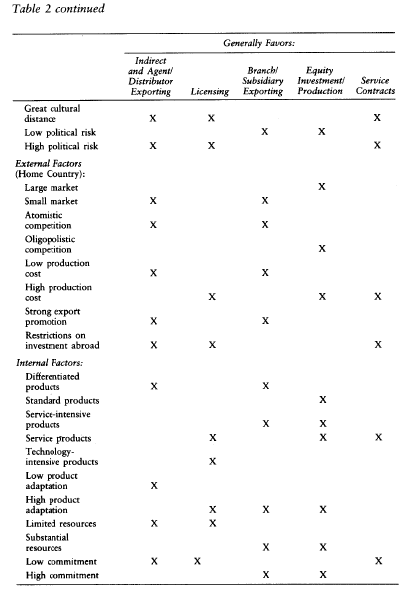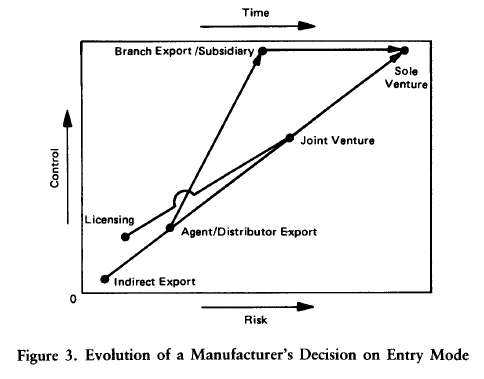Once started in international business, a company will gradually change its entry mode decisions in a fairly predictable fashion. Increasingly, it will choose entry modes that provide greater control over foreign marketing operations. But to gain greater control, the company will have to commit more resources to foreign markets and thereby assume greater market and political risks. Growing confidence in its ability to compete abroad generates progressive shifts in the company’s trade-off between control and risk in favor of control. Consequently, the evolving international company becomes more willing to enter foreign target countries as an equity investor.
The evolution of a manufacturing firm’s entry mode decisions is depicted in Figure 3. Because of constraints imposed by size, some companies may not evolve beyond branch/subsidiary export, while other companies move o>n to joint and sole ventures in local production. Since the export mode is not available to them, service companies will follow a different evolutionary path, but the direction will also be toward greater management control (and greater risk).
Table 3 offers a verbal description of four stages in the international evolution of a manufacturing company. Stage 4 denotes the multinational company, which designs its foreign market entry strategies from a global perspective rather than a single-country perspective, a subject taken up in Chapter 8. For our present discussion, the key distinction between stage 1 and stage 4 is the willingness of managers to choose an entry mode for a given product/target country from the full range of entry modes. Stage 1 managers are constrained to one or two entry modes; stage 4 managers are able to evaluate all possible entry modes to select the most appropriate one.
Changes in internal factors, particularly a growing commitment to for-eign markets, are the principal forces shaping a company’s international evolution. But external factors, as described earlier, are the most influential forces shaping a company’s entry mode decision for a specific product or target country. That is why a stage 4 company may use all the primary entry modes (exporting, contractual arrangements, and investment in production) to penetrate country markets throughout the world. The multinational company has taken to heart the injunction: there are many ways to skin the international business cat.



Changes in external factors in the foreign target country may encourage or force a company to revise its entry mode. It is vital, therefore, that a company continually monitor external factors in the target country and be prepared to revise its entry mode in order to sustain or strengthen its market position.
Source: Root Franklin R. (1998), Entry Strategies for International Markets, Jossey-Bass; 2nd edition.

21 Jul 2021
21 Jul 2021
21 Jul 2021
3 Jun 2021
21 Jul 2021
21 Jul 2021